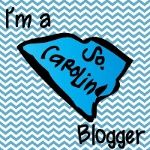Other Posts in This Series:
After our mysteries genre, we are ready to tackle informational texts! My reasoning for hitting this genre next is simple. It ties in with our study of animals in science and it grabs the attention of the students - especially those boys who don't really care for fiction. I want to hook them right away, too!
My informational unit will look completely different from my mysteries unit. This is because I want my students' interests to drive their learning here! Do you ever remember being assigned a topic to become an expert on in school? I do. One word for you - Zimbabwe. There's nothing that kills the excitement for learning more than making a student learn about something that they have no interest in...whatsoever!
So, with that being said, I begin my informational study by telling students that I want to learn about SHARKS! {There's no particular reason that I chose sharks, except that I really do find them fascinating and so do kids! You could choose absolutely any topic!} I pass out a post-it to each student and have them write a question that they wonder about sharks on the post-it. Then, I collect them and we read them aloud. As we read them, I sort them into "groups" - questions all about eating/diet would go in one group, questions all about babies/life cycle would go in one group, questions all about teeth/body would go in one group, etc. I sort them on a large anchor chart. Once all of the questions are sorted, I circle the groups and label them with the big ideas (diet, life cycle, body, etc). These will be the questions and big ideas that drive our learning during this unit.
I tell students that if I'm going to become a shark expert, they should all become experts on an animal, too - especially since we're studying animals in science! I pass out another post-it and students write 3 animals that they are interested in learning more about. I have them list 3 so I can be sure that they get one of their choices. I will collect these, pull any books I have and any books I can find at the school library on these animals. Then I will match students up to books based on their interests and reading levels. It never fails that someone chooses an animal that I don't have (at least on a good reading level for them) - that's when I visit the public library and collect even more books! I've also collected a great supply over the last few years - friends of the library sales are awesome, used books on amazon, and grants from Donor's Choose have all helped to build my library. I don't limit students to books though, they can also collect information from online! The sky's the limit...and trust me, they take their job very seriously. Parents are always commenting that their children are begging to research the animal at home, too!
So, what are students doing as they read and learn about the animal? Well, they're learning to take notes of that important information. I give each student a pack of lotus diagram note cards (I just make these out of index cards). The front card has our driving questions (big ideas) because those questions that they had about sharks are questions we would want to know about all animals! And then each question has a notecard of its own for students to jot down the things they learn. This is an organized way for them to learn about note-taking and will make it super easy for them when they start writing about their animals!
You can download a sample of these notecards that I use to guide my shark instruction below.
As we're reading informational texts, one of the big focuses of our mini-lessons will be text features. Many of these are new for second graders so I'll need to teach them how to use them. I hold a mini-lesson each day (about 10 minutes) where I'm reading and learning more about sharks...in fact, I'm modeling exactly what they're going to be doing that day with their books. Some days I'll hit the Table of Contents, other days I might hit using captions, etc.
After the mini-lesson students will get their books/notecards and read and learn...using the text features to help them!
Speaking of text features, as we learn about them, I reference the posters in my classroom. I find students using these as a reference DAILY! When I first introduce text features, I give students a "triple concentration" matching game to practice them. They cut the game apart, put it in a baggie and take it home to play for homework during this unit. Each day, we begin our reading time with a little "Around the World" text features game. They B-E-G for this game each day! Sometimes by the end of the unit I will have a student make it all the way around the world, but it is rare. However, watching the improvement during the unit is priceless!
As students are reading and learning more about his/her animals daily, I am roaming the room and checking in with students, helping out where needed. If I see that there is a particular need, I may pull small groups to work with - usually based on skills (using the Table of Contents, taking notes, etc) - during this time.
A little bit into the unit, I announce to students that we will hold a ZOO in our classroom at the end of our study. I tell students that THEY will be the zoologists and when visitors come to tour our zoo, they will have to teach them about their animal. Oh, the excitement builds! Now they have a true purpose for their learning. What if someone asks them a question about their animal? They want to know all they can learn!
Once students have read everything and anything they can get their hands on about their animal, they are tasked with a few jobs. First, they write their own informational text to prove that they are now an expert! Remember those lotus diagram cards?? Each card will become a chapter in their book....and, yes, students will need to include every single one of those text features we've been learning about!
They turn out amazing!!
They have to write at least 5 chapters. Every picture must be a realistic drawing with a caption, with one diagram in the book. It must include a Table of Contents, a Glossary, an Index, along with bold (in the glossary) and highlighted (in the index) special type. We even include a very simple Works Cited page after learning about plagiarism in a fun lesson where I give one student credit for another student's work in our classroom and talking about how it felt afterwards.
We don't stop there though! Students also create a sign. Every zoo exhibit needs a sign outside of the exhibit to showcase important information about the animal, right?
I bet you thought we were finished there, right?! Not quite. We also pull in some math integration with this unit. Students actually create life-sized replicas of their animals using bulletin board paper! During their research (sometimes this takes a bit of help on my part), we find the measurements of their animals and students work in pairs to help each other out with creating the replicas. After all, it can't be a zoo without animals, right?!
This animal is pretty typical, but we do have some GIANT ones sometimes - tigers, dolphins, pandas, etc. If someone happens to choose a blue whale (sigh) we just find the measurements of its tail or something and create that! :)
While we're doing all of this work in the classroom, students are designing shoebox diorama habitats at home. That is the only thing I send home during this unit - everything else we do in class.
Then, it's time for the zoo! This is the first time my students talk to visitors coming through so sometimes they're a bit nervous, but they do an AWESOME job! They'll be pros before long, as we invited families to our classroom all year long!
Sometimes, if we have a spare classroom in the school, I will get permission to set up our zoo in there - just so there's enough room to tape all of the animals to the walls! I found these great safari hats at Dollar Tree one year and bought a class set that we can reuse from year to year. We create name tags identifying students as Zoologists (with their specialist area underneath). They feel super important and take their jobs very seriously! :)
One thing that I did new last year was to leave a little "visitors' book" outside in the hallway so guests could write comments on their way out. Students loved reading their rave reviews!
Resources:
One question I always get when sharing how I teach through genre studies is about assessments. While we aren't reading a new story each week and giving weekly reading tests, my students are still getting lots of assessments - I probably have more grades teaching this way than I ever did using the basal. An example with this unit - students would be quizzed on text features (using a Table of Contents, using a Glossary, reading a Diagram, using an Index), I grade their informational books they create, I grade their projects, I sometimes give them informational passages to read with questions to assess (possibly on sharks since we're all kind of learning about those with the mini-lessons) and I give an end of unit test (also with a shark passage and including text features). Most of these assessments I created myself, so it was a bit of work upfront, but once it's set in place you're ready to go for future years!
This unit includes just about everything I use to TEACH my students about informational texts - the reference signs, the matching games, the Around the World cads, text features quizzes, the pages for students' books they create, the lotus card template, and rubrics for grading.
This pack contains everything I use to help create our classroom zoo - the zoo signs, invitations, name tags, exhibit signs, graphic organizers, habitat diorama project letter, reflections and rubrics!







































This unit sounds amazing! I am getting more and more excited to use genres to teach reading this year than ever before. The kids will LOVE this!
ReplyDeleteThank goodness for the back to school sale!
I am so in love with your blog and getting more & more excited each time I read about teaching reading through genres! I would love love love to have your genre studies in daily lesson plans! Is there any chance you'll do this? PLEASE ...... :)
ReplyDelete